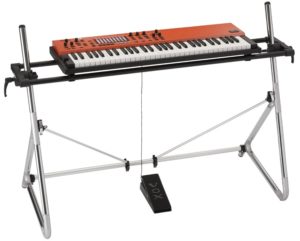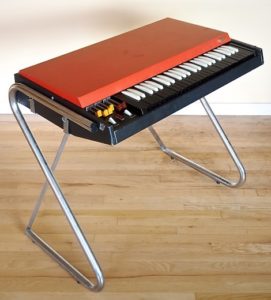Anything that we want to go from just a beginner to a pro,
You need a montage (montage)
Oh, it takes a montage (montage)
— Team America Lyrics
Back in January before Winter NAMM 2015, there was a lot of speculation about a new Yamaha workstation to replace the venerable Motif product line. Yamaha filed for the trademark name “Montage” in December 2014 and many wondered if this would be the name of the new workstation. (Yamaha have a teaser ad for “Reface” at https://www.yamahasynth.com with a countdown clock leading up to Summer 2015 NAMM week. Your guess is as good as mine!)
Getting a little bit Zen for a moment, it doesn’t matter what a thing is called. All that matters is what the thing is.
Periodically, I troll the United States Patent and Trademark Office (USPTO) database for interesting patents and patent applications. Yamaha carefully (and wisely!) protects its inventions through patents. Yamaha R&D, by the way, rarely publishes in the scientific literature, which is another way to stake your ground. Patent protection is stronger legally. A patent costs money, so a corporation is usually serious about a technology when it makes the commitment to file. The Yamaha patent applications cite Japanese applications/patents to establish priority in the United States. Thus, there is usually an existing Japanese application or patent that was filed at an earlier date for each US application.
Of course, a patent does not necessarily indicate that a product will follow. However, I’ve noticed a trend in some (relatively) recent filings by Yamaha.
Let’s start with US Patent Application Publication 2013/0305902, “Accompaniment Data Generating Apparatus,” published November 21, 2013. Quoting the application, “An object of the present invention is to provide an accompaniment data generating apparatus which can generate automatic accompaniment data that uses phrase waveform data including chords.” This rather lengthy patent application describes a musical instrument keyboard that uses audio waveforms in the same way that an arranger or Motif-series workstation uses MIDI phrases (AKA arpeggios). The application cites Japanese Patent Publications No. 2900753 (MIDI-based accompaniment) and No. 4274272 (MIDI-based arpeggio performance) as prior art.
US Patent Application Publication 2013/0047821 (published February 28, 2013) covers similar ground. This application adds waveform pitch shifting and time stretching. It cites Japanese Patent Publication No. 3397082 on the specific capability of pitch shifting and time stretching. Audio phrases (waveforms) need to be transposed via pitch shifting and must fit into the rhythm via time-stretching.
US Patent Application Publication 2013/0305907 (published November 21, 2013) is related to the previous two application. It covers production of chords using audio waveforms, guided by chord root and chord type.
US Patent Application Publication 2014/0033902 (published February 6, 2014) is titled “Technique for Analyzing Rhythm Structure of Music Audio Data.” The technique described in this application identifies the beat positions and intervals in a piece of music in audio form (i.e., rhythm pattern analysis). Figure 1 shows the embodiment (design) of the technique within an accompaniment generation system. The beat position information is used to synchronize playback of both MIDI and audio phrases. The diagram shows a “MIDI reproduction section” and an “Audio reproduction section.”
The most recent publication is 2015/0154979 (June 4, 2015) and is titled “Automated Performance Technology Using Audio Waveform Data.” The application deals with a specific issue that arises when audio waveforms are used for accompaniment (pitch shifting and time stretching). Quoting the application, “it is an object of the present invention to properly deal with a processing delay and sound quality deterioration that are likely to occur when audio waveform data is reproduced with time axis expansion/contraction control performed on the audio waveform data in accordance with a desired performance tempo.”
These are long documents with a lot of detail expressed in excrutiating “patent language.” They are too long and detailed to summarize here. I recommend downloading the patent applications from the USPTO, brewing coffee, and then reading the applications.
Looking at the overall trend, Yamaha are thinking about automated accompaniment that incorporates both MIDI and audio phrases. This technology could be applied to arranger instruments or a new generation of synthesizer workstation. The latest arrangers have “audio styles” which only use audio for the rhythm track. No “harmonic” phrases (e.g., bass line, electric piano comping, etc.) are available. The current Motif generation (the XF and MOXF) have only MIDI-like arpeggios. Possibly, combined audio/MIDI accompaniment was not fully cooked in time for the PSR-S950 and Tyros 5.
I am very interested to see if Yamaha rolls out this technology in future products. The definition of “montage” is “the process or technique of selecting, editing, and piecing together separate sections of film to form a continuous whole.” Hmmm.


